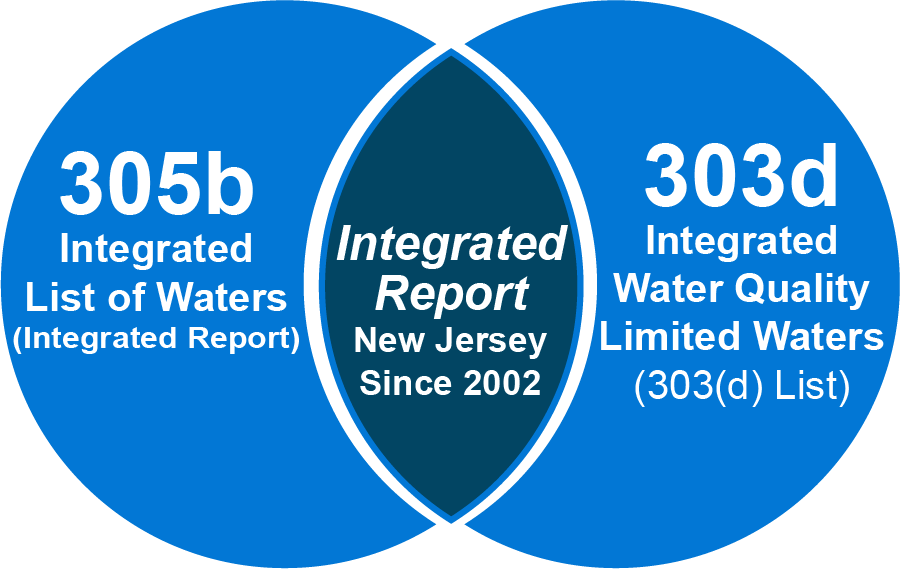NJDEP’s water quality standards, monitoring, and assessment programs provide the scientific foundation for restoration and protection of New Jersey’s water resources in accordance with the federal Clean Water Act and the New Jersey Water Quality Planning Act. These programs have been integrated into a comprehensive monitoring, assessment, and restoration program implemented through a rotating basin approach that will produce a comprehensive assessment of the entire State every ten years. The primary purpose of the integrated water quality assessment program is to determine the health of New Jersey’s water resources. We do this every two years by compiling a vast amount of data and information collected by numerous sources and evaluating this information to assess water quality conditions and support of designated uses, identify sources and causes of water quality impairment, and develop restorative responses. The results of these biennial assessments are published in New Jersey’s Integrated Water Quality Monitoring and Assessment Report (Integrated Report) and are used to inform and guide water quality monitoring, restoration and protection efforts conducted at the state, regional, watershed and local levels. This information is also used by Congress, the U.S. Environmental Protection Agency (USEPA), and the state decision-makers to establish program priorities and funding for restoring, maintaining, enhancing and protecting waters and the uses and benefits (public health, environmental, and economic) they provide.
The federal Clean Water Act mandates that states submit biennial reports to the U.S. Environmental Protection Agency (USEPA) describing the quality of their waters. The biennial Statewide Water Quality Inventory Report or "305(b) Report" must include the status of principal waters in terms of overall water quality and support of designated uses, as well as strategies to maintain and improve water quality. The 305(b) reports are used by Congress and USEPA to establish program priorities and funding for federal and state water resource management programs. The biennial List of Water Quality Limited Waters or "303(d) List" identifies waters that are not attaining designated uses because they do not meet surface water quality standards despite the implementation of technology-based effluent limits. States must prioritize waters on the 303(d) List of Water Quality Limited Waters for Total Maximum Daily Load (TMDL) development and identify those high priority waters for which they anticipate establishing TMDLs in the next two years.
 In 2002, New Jersey combined these requirements into one biennial, integrated water quality assessment report that provides the information about New Jersey's water resources, current water quality conditions, and causes and sources of water quality impairment needed to inform and guide water quality monitoring, restoration and protection efforts conducted at the state, regional, watershed and local levels. The Integrated Water Quality Assessment Report (Integrated Report) combines and satisfies the reporting and public participation requirements of Sections 305(b) and 303(d) of the federal Clean Water Act (along with Section 314 Clean Lakes Program).
In 2002, New Jersey combined these requirements into one biennial, integrated water quality assessment report that provides the information about New Jersey's water resources, current water quality conditions, and causes and sources of water quality impairment needed to inform and guide water quality monitoring, restoration and protection efforts conducted at the state, regional, watershed and local levels. The Integrated Water Quality Assessment Report (Integrated Report) combines and satisfies the reporting and public participation requirements of Sections 305(b) and 303(d) of the federal Clean Water Act (along with Section 314 Clean Lakes Program).
The information provided in the Integrated Reports is also used to establish funding and implementation priorities for enhancing and protecting waters of the State and the uses and benefits (public health, environmental, and economic) they provide. Information about older Integrated Reports is available under the “Previous Assessments” tab, above.